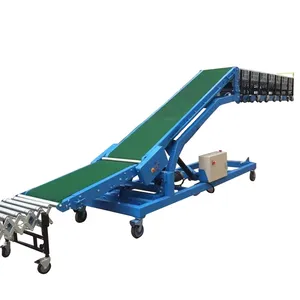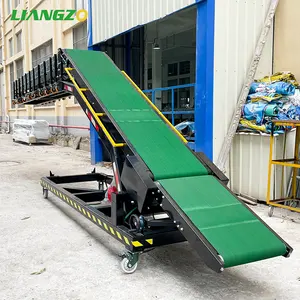
All categories
Featured selections
Trade Assurance
Buyer Central
Help Center
Get the app
Become a supplier

(983 products available)


































Flexitanks are used to transfer or store high-volume, bulk liquids, semi-liquids, or powders that are non-food across the globe.
Hybrid flexitanks are among the newly introduced types of flexitank designs fit for several loading and unloading options as follows:
Pump System
The hybrid pump system flexibag is ideal for small-volume bulk liquid transfer. In this type, a pump is used to empty or fill the tank, which tends to be very efficient when the fluid is moved under pressure. The pump system hybrid flexitank is best suited for receiving and dispatching tanks that do not have the capacity to hold more than 25000 liters of liquid.
Gravity System
The hybrid gravity flexitank is designed with a frame that has a slope. This enables the fluid to move by itself during unloading or loading without using a pump. It is ideal for higher volume transfers where the tank can be placed higher than the tanker or the receiving vessel.
Extractor System
Just like the gravity flexitank, the extractor system flexible bag also utilizes a frame with a sloped design. The difference between the two lies in the fact that the extractor flexitank uses air or a vacuum to unload the contents. This type is designed for fluids that need to be moved by suction. Highly viscous or low-pressure fluid transfer tends to benefit a lot from this kind of hybrid flexitank.
Combination System
Some hybrid flexitanks are designed to incorporate all the three systems simultaneously, that is, the gravity, extractor, and pump system. They can switch between the three methods of loading and unloading according to the requirements needed at that specific time. Such flexible tanks are very useful because they can adapt to many conditions that may arise. Multi-purpose flexitanks are very effective in locations where the availability of resources may be very limited.
Material Used
Flexitank is made up of several materials that tend to differ in their level of resistance to abrasion, temperature, and pressure. Some are more suited to hold certain types of liquids than others. The outside layer is usually made of PVC-Polyvinyl Chloride or sometimes PU-Polyurethane to make it more flexible and resistant to rupturing. The intermediate layers are made from fabrics such as polyester that reinforce the structure and add to the strength. Polyethylene is the innermost layer that makes the tank safe and clean for storing food substances like juices and cooking oils.
Tank Linings
Some hybrid flexitanks have a special lining that is meant for holding corrosive materials such as acids, chemicals, or solvents. These include either Polypropylene or Ethylene Vinyl Alcohol. Addition of such layers increases both the thickness and the expense of the tank. However, given the high costing of treatment or replacement of cargo due to potential hazards, this investment may be well worth it.
Frame Materials
The frame supporting the hybrid flexitank is constructed using either PVC, PU, or PE lining over metal or hard plastic to serve the purpose of protecting the delicate material inside. This ensures that the tank is well secured with minimal risk of pressure application that can puncture it. The choice of the frame material generally depends upon the surrounding environment where it will be used.
Durability
Flexitanks are very durable and can easily last for more than six months if used appropriately and under good conditions in neutral environments. That is, conditions that do not include high heat, extreme cold, or any chemicals. However, harsh environments may call for repair or replacement of certain components. For example, the exterior of a PVC frame may wear out faster when exposed to constant sunlight. Similarly, chemicals can degrade the intermediate layers over time.
Container Terminals
Hybrid flexitanks can be loaded and unloaded at designated facilities with the appropriate equipment for handling bulk liquids. These facilities are often termed as 'container terminals', and they include specialized port terminals or inland waterways.
Mobile Units
In situations where there are limited resources or infrastructure, even mobile units can be used to transport a hybrid flexitank.
Transport Medium
Flexitanks can be trucked using purpose-built vehicles. These vehicles are commonly known as 'bulk carriers' or 'bulktainers'. These vehicles have been designed and constructed with the appropriate retrieval and delivery apparatus for the tank.
When purchasing a hybrid flexitank for bulk liquid transport, several important factors should be taken into consideration to ensure both the safety of the cargo and efficiency of operation.
Hydration Needs
Before purchasing a hybrid flexitank, the hydration requirements for the specific liquid to be transported and its volume should be established. Choose a tank that is available in the required capacity and has a material compatible with the kind of liquid. For example, a polyethylene liner might be needed for food-grade substances and for chemicals, either Ethylene Vinyl Alcohol or Polypropylene materials might be used.
Equipment and Facilities
Consider what equipment needed for the tasks at hand is available and what facilities are around both for loading and unloading the hybrid flexitank. These factors should be influenced by the choice of the hybrid flexitank. Hybrid flexitanks have different loading and offloading mechanisms. It is recommended that the one which has compatible and easily obtainable equipment and facilities for handling bulk liquids near the terminal should be selected.
Transportation
A hybrid flexitank should be selected based on the kind of transportation medium available. Some hybrid flexitanks are compatible with only certain types of vehicles. For instance, some are designed for rail, road, or maritime transport only. The preferred transportation mode should suit the tank designed for it. Also, the stabilization mechanism within the tank should minimize movement during transit.
Time and Cost Efficiency
Hybrid flexitanks are designed and engineered to create efficient loading and unloading processes, for instance, with the use of gravity. Enhanced facilities for handling the fluid bulk will reduce the time required for the loading and offloading, as well as for storage and transportation of the fluid. Moreover, hybrid flexitanks that are compatible with the existing equipment may reduce expenses otherwise incurred in the purchase of newly required equipment, hence becoming time- and cost-efficient.
A1: Depending on the material used to create the tank, hybrid flexitanks can carry a wide variety of materials, including food-grade substances, petroleum products, chemicals, and industrial liquids. They are created to handle a variety of liquids and to be flexible while being safe and dependable for bulk liquid handling.
A2: Because they can unload and load using different techniques, hybrid flexitanks are extremely adaptable. For efficient transfer, they often have built-in gravity, pumping, or extracting mechanisms. This adaptability enhances their applicability in various sectors and significantly speeds up the process of loading and offloading.
A3: Several strong, reliable materials are used to create the handles that make up the integrated liner system of the hybrid flexitank. It is recommended to avoid dragging or rubbing the flexitank against anything. One should also avoid excessively tugging on the handles, as this might warp or cause some loosening to the hybrid flexitank.
A4: Although hybrid flexitanks are usually bulk items, they are still reasonable and beneficial for smaller liquid bulk transportation projects. The correct hybrid flexitank can be selected based on the fluid and volume needs.
A5: No specialized storage areas or handling facilities are required for hybrid flexitanks. To achieve the best results, however, it is advised to utilize the proper equipment for loading and unloading. Hybrid flexitanks are remarkably adaptable and may be employed in various common settings.